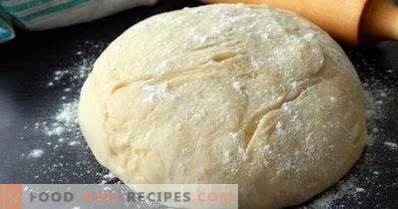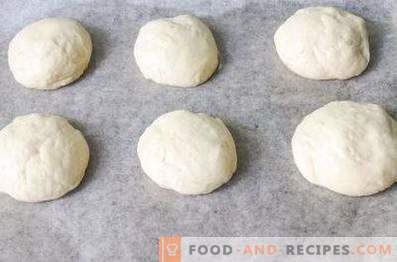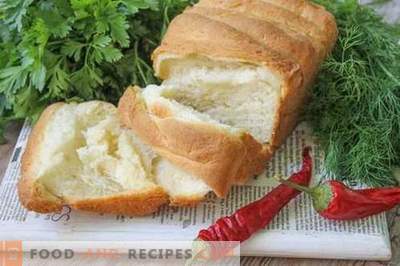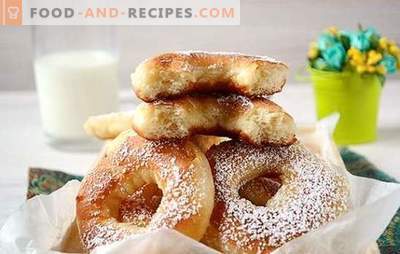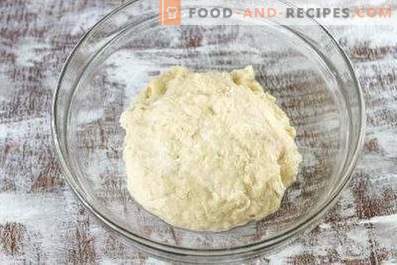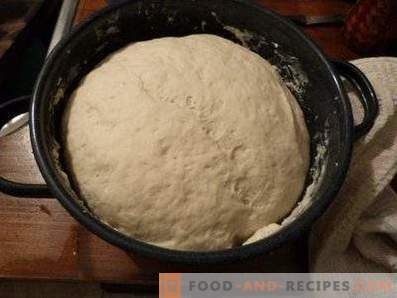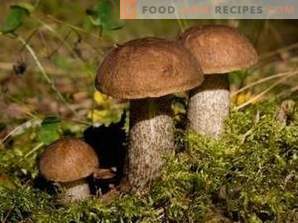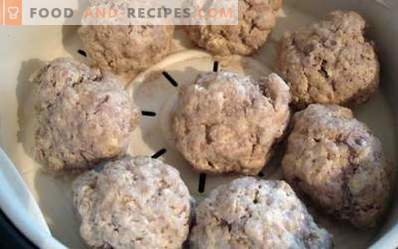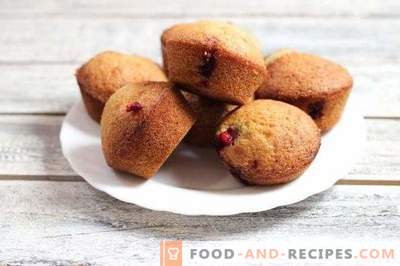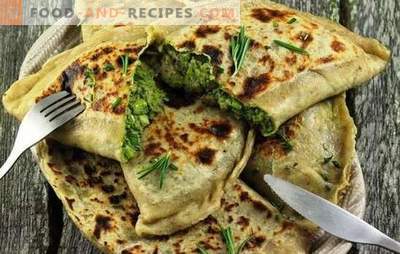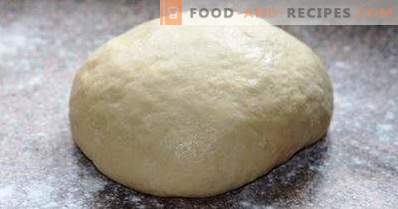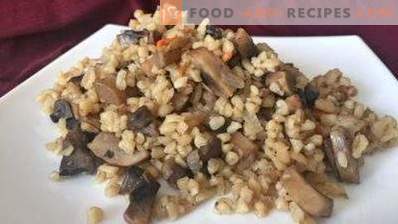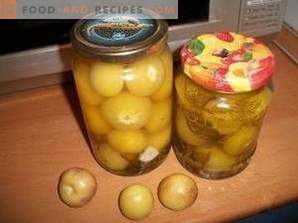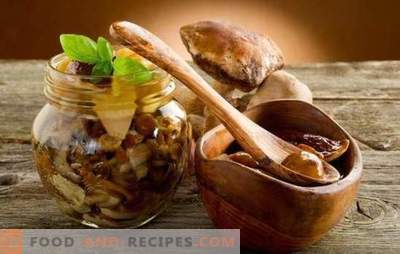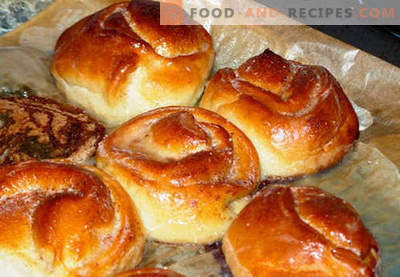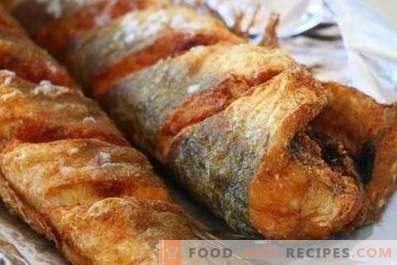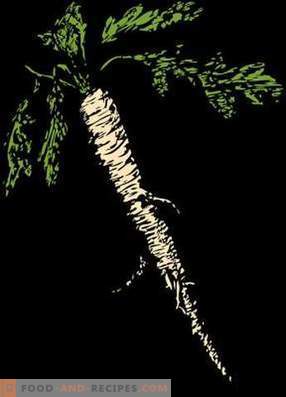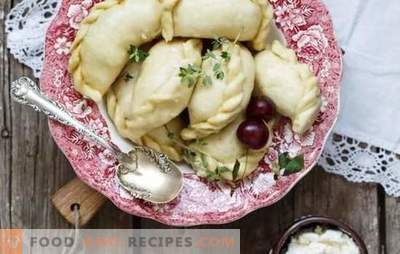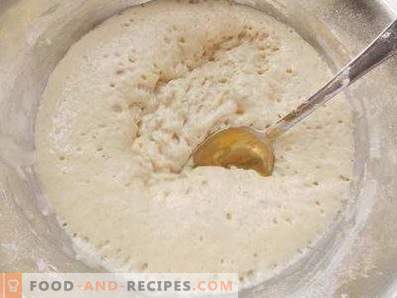
Bread dough is kneaded with yeast or sourdough, straight or sponge. Experienced chefs prefer the latter option. The bread brew ripens slowly enough, so that the pastry loses its characteristic yeast flavor, which is more friable, fluffy and fragrant. The dough itself on the dough rises faster than kneaded without using it. Also the sponge method is preferred if you are not sure about the quality of the yeast.
Cooking Features
For the preparation of brew mix a small part of the prescription amount of flour, warm liquid with yeast and sugar diluted in it, or ready-made leaven. This mixture is left to fit. After that, it remains to add the remaining flour and other ingredients provided by the recipe, wait for the dough to rise and begin to form and bake the bread. This process may seem simple, but in fact it has many nuances. Ignorance of some points can lead to the fact that the result does not meet the expectations of the chef.
- You can use rye or wheat flour or their mixture to make bread dough. It is important that products are first or top grade. The higher the grade of the flour, the longer the brew made on it will fit, but the tastier and more fragrant will be the finished bread.
- Before adding flour to the brew, it is necessary to sift. This manipulation is needed not only to rid the product of small litter and insect larvae. The main task is to saturate the flour with oxygen. This makes it easy. And opara, and the dough on such flour rise better. Baking it turns out more gentle and airy.
- For the preparation of dough for bread, not milk is usually used, but water. Its temperature should not be too high. Dry yeast is diluted with a liquid having a temperature of about 30 degrees, pressed yeast - with water at room temperature. Cold or hot liquid should not be. In a cold environment, the yeast will work poorly, and hot liquid will kill them altogether.
- The container with brew is usually kept in a moderately warm place, which is necessarily protected from drafts. There is an unusual way to make brewing bread for bread when it comes in the fridge. It requires special (instant) yeast.
- Capacity for sponge is chosen taking into account the fact that it can greatly increase in volume. Per liter of sponge will need a capacity of at least 3 liters. The dish with the brew is closed with a plastic cap or tightened with food wrap. And in the lid and in the film you need to make narrow holes so that the opara does not suffocate.
- It is important not to miss the moment when the sponge approached. It is ready for use as soon as it begins to crack in the center and fall off.
For making dough for bread based on dough, it adds the remaining flour and other ingredients (salt, butter, milk). The kneaded dough is kept warm until it rises. After that, you can put the dough in the form and send it to the preheated oven. Bake bread at a temperature of 220-240 degrees. Usually it takes 1, 5-2 hours. The exact time of making bread depends on the size of the loaf.
Bread dough on pressed yeast
Composition:
- pressed yeast - 25 g;
- boiled or filtered water - 0, 25 l;
- sugar - 20 g;
- wheat flour - 80 g.
Method of preparation:
- Mash the yeast, crumble into a bowl.
- Fill yeast with boiled water cooled to room temperature. If you use filtered water, it should not be cold (not lower than 20 degrees).
- Add sugar. Mix thoroughly to achieve a homogeneous composition.
- Sift flour, pour it into a bowl with a liquid base. Stir to prevent the presence of flour lumps in the dough.
- Wrap a bowl with cling film, pinch small holes in it with a toothpick.
- Leave the bowl with brew in a warm place and periodically assess its condition.
After the sponge rises and begins to fall, it's time to add the remaining flour and other ingredients to it, knead the dough. If you miss this point, the bread may come out too sour.
Bale for dry yeast
Composition:
- boiled water - 0, 25 l;
- dry yeast - 10-11 g;
- sugar - 40 g;
- flour - 40 g.
Method of preparation:
- Boil water, cool to 30-35 degrees. Pour into a bowl.
- Pour the yeast and sugar into the water. Stir, ensuring that the sugar crystals are completely dissolved.
- Enter the flour. Thoroughly mix the composition so that no flour lumps form in it.
- Cover the bowl with foil, make several small holes in it.
It remains to put the bowl with the brew in a warm place and wait until it fits.
Slow Brewing for High Speed Yeast
Composition:
- water - 0, 2 l;
- flour - 0, 25 kg;
- high-speed dry yeast - 3 g;
- sugar - 5 g.
Method of preparation:
- Sift flour. Mix it with sugar and dry yeast.
- Add water. It should be slightly warmer than room temperature (about 25-28 degrees).
- Stir food thoroughly. It should turn out rather thick homogeneous mass.
- Place the resulting mass in a 1, 5–2 l can. Close the jar with a plastic lid, making a hole in it with a hot needle or just a knife.
- Put the jar of brew in the refrigerator, on the shelf as remote from the freezer compartment.
The opara will be suitable for about a day, but it may come up faster, therefore, 16 hours after being placed in the refrigerator, it is necessary to begin to monitor its condition. Before preparing the dough, the dough should be allowed to warm to room temperature by exposing it for 30-60 minutes from the refrigerator.
When kneading dough based on dough, care must be taken to ensure that there is enough sugar in it to feed the yeast. If all the sweet product goes to feed the bacteria, the round loaf will come out without a golden crust.
Brewing bread can be put on live or dry yeast, including instant yeast. The longer the sponge approaches, the tastier is the bread.
